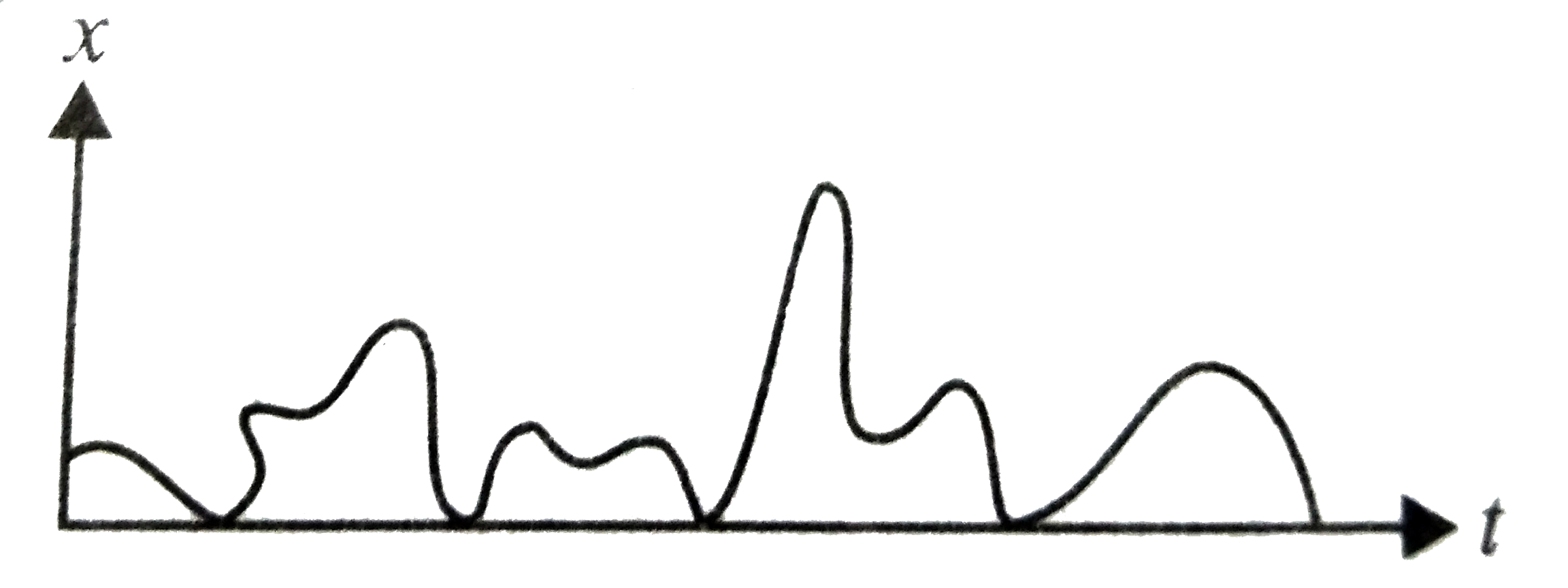Which of the following functions of time represented (a) periodic and (b) non-periodic motion ? Given the period for each case of periodic motion (ω is any positive constant(i)sinωt−cosω(ii)log(2ω)
(i) sinωt−cosωt periodic function . It can be written as
√2(sinωt−1√2−cosωt1√2)
=√2(sinωcos.π4−cosωtsin.π4)
=√2sin(ωt−π4)
=√2sin(ωt−π4+2π)
=√2sin[ω(t+2πω)−π4]
The periodic time of the function is 2πω
(ii) The function log(2ωt) increases monotonically with time t. It, therefore,never repeats its value and is a non-periodic function . As t→∞,log(2ωt) diverge to ∞. It therefore, cannote represent any type of physical displacement.
Topper's Solved these Questions
- OSCILLATIONSBOOK - AAKASH INSTITUTECHAPTER - OSCILLATIONSEXERCISE - Try Yourself
86 Videos
- OSCILLATIONSBOOK - AAKASH INSTITUTECHAPTER - OSCILLATIONSEXERCISE - ASSIGNMENT ( SECTION -A)
58 Videos
- NUCLEIBOOK - AAKASH INSTITUTECHAPTER - NUCLEIEXERCISE - ASSIGNMENT (SECTION-D)
10 Videos
- PHYSICAL WORLDBOOK - AAKASH INSTITUTECHAPTER - PHYSICAL WORLDEXERCISE - ASSIGNMENT (Section-B)
5 Videos
Similar Questions
Which of the following funchtions of time represent (a) periodic and (b) non-periodic motion? Give the period for each of period motion. (ω is any positive constant )
(i) sinωt+cosωt
(ii) sinωt+cos2ωt+sin4ωt
(iii) e−ωt (iv) logωt
View SolutionWhich of the following funchtions of time represent (a) periodic and (b) non-periodic motion? Give the period for each of period motion. (ω is any positive constant )
(i) sinωt+cosωt
(ii) sinωt+cos2ωt+sin4ωt
(iii) e−ωt (iv) logωt
View Solution
Knowledge Check
Which of the following functions of time represent periodic motion ?
Asinωt+cosωt,Be−ωtClog(ωt)DNone of theseWhich of the following x-t graphs does not represent periodic motion?
A B
B C
C D
D
Identify function which represent periodic motion
AeωtBloge(ωt)Csin(ωt)+cos(ωt)De−ωt
Which of the following functions of time represents (a) periodic motion, (b) non-periodic motion and (c ) harmonic motion ?
find the period of each periodic motion. [ω is any positive constant]
(i) sin2ωt+cos2ωt
(ii) cosωt+2sin2πt+3cos3πt
(iii) cos2ωt
(iv) sin(2ωt+π/3)
View SolutionWhich of the following functions of time represents (a) simple harmonic motion and (b) periodic motion? Given the period for each case.
i. Sinωt−cosωt ii. Sin2ωt
View SolutionWhich of the following functions of time represent (a) simple harmonic, (b) periodic but not simple harmonic , and (c) non-periodic motion ? Give period for each case of periodic motion ,ω is any positive constant). ltbr> (a) sinωt−cosωt) (b) sin3ωt (c) 3cos(π4−2ωt)
(d) cosωt+cos3ωt+cos5ωt) (e) exp(−ω2t2) (f) 1+ωt+ω2t2
View SolutionWhich of the following functions of time represent (a) simple harmonic (b) periodic but not simple harmonic and (c ) non periodic motion? Give period for each case of periodic motion (ω is nay positive constant)
(1) Sin3ωt (2) 3cos(π/4−2ωt)
(3) cosωt+cos3ωt+cos5ωt
(4) e−ω2t2 (5) 1+ωt+ω2t2
View SolutionWhich of the following functions of time represent (a) simple harmonic motion and (b) periodic but not simple harmonic motion? Give the period for each case.
(i)sinωt−cosωt (ii) sin2ωt (iii) cosωt+2sin2ωt
View Solution
